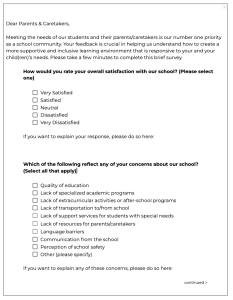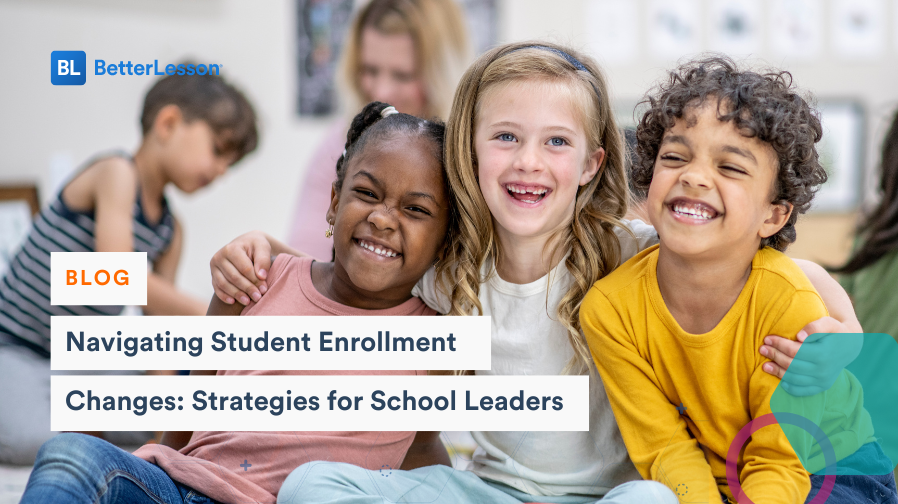School enrollment is key to maintaining a healthy, functioning school environment. It helps ensure adequate funding, as school enrollment is often tied to funding allocation; it allows schools to sustain a broader range of academic opportunities, such as A.P. or arts courses; and it helps create stability and continuity within a school community.
However, concerns around enrollment have grown since the pandemic, which caused deep cuts in enrollment for many schools. The reasons for this are multifaceted and vary across communities, but generally speaking, some students made the permanent shift to online schools, some students remained in home-schooling, and others dropped out entirely.
While many factors surrounding school enrollment are out of school leaders’ hands, there are practical and impactful steps school leaders can take to address enrollment concerns within their district.
Address Barriers and Identify Community Needs
First and foremost, it is important to recognize that enrollment challenges are specific to community and school contexts. While there are strategies that can be implemented and impactful across school settings, there are undoubtedly nuances and particular needs within a school community that need to be identified and addressed when navigating student enrollment challenges.
The way to identify these needs and whether or not your school is meeting these needs is to hear directly from your school community. One way to gather this information is through surveying current parents/caretakers within the school community.
Here is a sample survey that can be used/modified, with an excerpt shown below:

Such a survey can be a critical first step in being responsive to parent/caretaker needs when addressing enrollment concerns.
A few important considerations when surveying parents/caretakers:
- Make sure the survey is translated into any necessary languages to ensure accessibility.
- Provide multiple opportunities for parents/caretakers to complete the survey: send physical copies home and email an electronic version, provide copies at the front desk, give time to complete the survey during meetings (i.e. parent-teacher conferences, parent involvement meetings, IEP meetings, etc), or call home and offer parents/caretakers to take the survey verbally.
Reframe the Question of Student Enrollment
One powerful way to approach enrollment issues is to reframe the question. Rather than simply asking How can we get more parents/caretakers to enroll their child(ren) in our school? try asking these questions: How can we make our school a place where students and their families want to be? How can we use our school as a space to help meet student, family, and community needs?
These questions help place the responsibility of student enrollment on the school, rather than on the parents/caretakers. Additionally, they help change the focus from simply increasing enrollment to becoming an anchor in the community. This shift will help to think critically and proactively about how your school can address gaps in your offerings and approach.
Leverage Community Partnerships
Consider how your school can establish partnerships with community organizations and agencies to make your school a community hub, a place where families can both address their needs and congregate in community with others.
Here are some ideas for community partnerships:
Collaborate with healthcare clinics: Work with local healthcare providers to offer regular health screenings, vaccination clinics, mental health or counseling services, and more.
Partner with social service agencies: This can help meet basic needs within your school communities (i.e. food support, financial literacy, housing support, ESL courses, etc.).
Collaborate with fitness and wellness centers: Allow local fitness or wellness centers to offer fitness classes, massage services, or mindfulness courses at your school.
Engage youth programming organizations: Rather than relying solely on your school’s internal capacity for after-school programs, partnering with outside organizations can help establish a more robust offering of after-school programs.
Partner with employers: Hosting career fairs with local employers can be a great way to help connect your school’s families with career opportunities in the community.
Collaborate with local colleges or universities: Hosting college days with local higher education institutions can help make conversations about higher education more accessible.
Navigating all of these needs is difficult for families, especially when you think about the limitations of work schedules. If families don’t have to look any further than their child(ren)’s school to meet many of their needs, there are certainly going to be positive impacts on school enrollment.
Create a Culturally and Community Relevant Curriculum
Oftentimes, there is a mismatch between the curriculum of a school and the cultural and community context of the population it serves. Identifying and filling those gaps can be a powerful approach to positively impacting student enrollment.
This is highly contingent upon a school community, but here are a few potential considerations to start conversations:
- If your school has a high percentage of Latino/a/x students, you might consider offering Spanish language immersion programs, critical Latin American history courses, or Latino/a/x literature courses.
- If your school has a large farming population, you might consider offering courses related to agricultural or environmental sciences, horticulture or agricultural economics/business.
- Make intentional efforts for your school’s staff to reflect your community demographics. For example, if your school has a high percentage of Black or African-American students, it is important to make concerted efforts to recruit Black or African-American teachers and school staff. There is plenty of research that demonstrates, for example, that when Black students have Black teachers, there are significantly positive academic and personal outcomes, such as decreasing school drop-out rates and increasing college attendance rates.
School enrollment is a challenging, complicated issue, and it is tied to so many aspects of schooling: curriculum, staffing, teacher training and professional support, community partnerships, and more. BetterLesson is here to support schools and districts in navigating all of these issues. Schedule a call with us today to learn more about how we can collaborate and support.
Get in Touch







